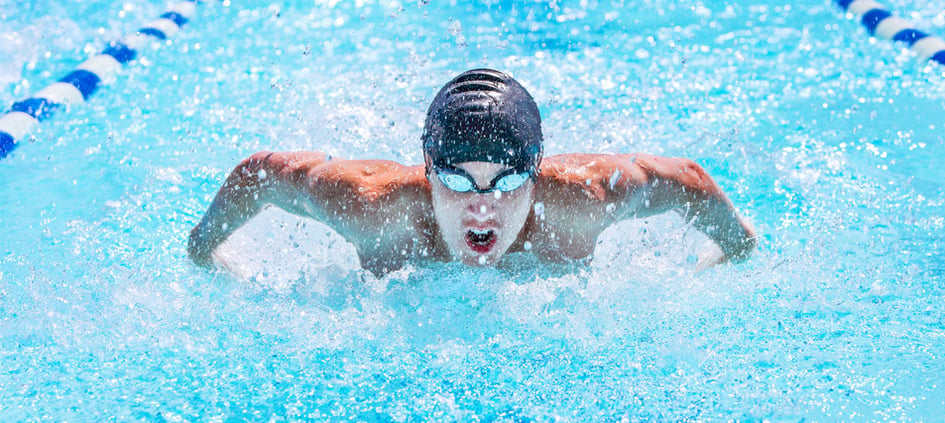7 Tips To Prepare For The Athletic Recruitment Process

By Matt Musico
Start making immediate progress with your athletic recruitment experience by following along with these seven tips.
Officially deciding to pursue your sport of choice in college is equal parts exciting and nerve-racking. Many of the nerves may stem from the athletic recruitment process itself, which contains a lot of gray areas and variables. As we continue navigating through a global pandemic, those uncertainties still hold true.
The most important aspect of athletic recruiting -- and many things in life, really -- is finding a way to make incremental progress feel productive. The following seven tips will help accomplish that while allowing students participating in the athletic recruitment process to feel ready for the experience.
1. Get Educated On the Process
Before jumping head-first into an endeavor, it’s a good idea to get educated on that particular topic as much as possible. For an experience with as many variables as athletic recruitment, taking time to read as much as you can on the topic could do a world of good — especially if this is the first time going through it. There are many websites and blog posts out there with accurate information and informed opinions. However, when I first start working with a prospective recruit, the first thing I recommend is that he or she read the NCAA’s Guide for the College-Bound Student Athlete.
This guide is helpful because it’s an all-encompassing resource on athletic recruitment. Some of the topics discussed include the varying academic standards for Divisions I, II, and III athletics, information on scholarships, national letters of intent, recruiting calendars, and much more.
For those students who’d like to play varsity sports, but not at the NCAA level, there is also the National Association of Intercollegiate Athletics (NAIA). For information on how NAIA differs from NCAA, there is a guide for that level, too.
2. Gather the Necessary Academic Information
For recruits who must market themselves to college coaches, it’s crucial to have all the necessary academic information on hand for whenever it’s needed. The goal is to make a coach’s job as easy as possible from a recruitment standpoint because it allows the coach to focus on what’s really important and shows that a potential recruit is serious about playing at the next level.
Academically speaking, there are a few things student-athletes should always have ready: an updated unofficial transcript, current year and/or next year’s course schedule, any available SAT/ACT scores (practice or official tests), and the dates of any planned future tests.
If a coach is interested in a recruit, he or she will want (among other information) the recruit’s relevant academic information to bring to the admissions office to see if that athlete would be a competitive applicant. Providing all this academic information to the coach makes his or her job much easier, and it provides clarity to a recruit much faster regarding whether or not he or she has a good shot at recruitment.
3. Gather the Necessary Athletic Information
In addition to giving coaches all the academic information necessary to do a pre-evaluation, student-athletes should be doing the same for their athletic information/background. The best way to present this is with an athletic resume. The formatting is completely up to the recruit — there is no right or wrong way to do it — but for those in need of guidance or creative inspiration, plenty of templates can be found from a simple Google search.
While the formatting can vary, the information typically needs to be consistent. Some of the things that should be included are the following:
- The name and contact information for your high school/club coach
- Any information regarding club/travel/AAU team(s)
- Relevant personal details (date of birth, position, height, weight, and other similar information)
- Relevant and/or most updated statistics
- Any individual/team awards won during high school
- Names of past camps/showcases/clinics that have been attended, and names/dates of any scheduled in the future
Again, this makes a coach’s job much easier, and he or she will be able to get a better read on a recruit who has all this information ready and organized to share.
4. Give Coaches Something to Look At
While creating a short highlight video has always been a good idea, it’s become crucial in a world where in-person recruiting has become extremely hard since the pandemic hit. All of the academic and athletic information is great to send, but for a coach to continue pursuing recruits from there, he or she typically likes to get a sense of a student’s athletic ability.
Brevity is important to strive for when creating and sending highlight videos. College coaches are typically expert multi-taskers, so time is always of the essence. They want to get all the pertinent details in a concise manner, which means about three to five minutes for highlight videos.
This gives a potential recruit plenty of opportunities to showcase his or her skills in both practice and game settings where he or she is easily identifiable. View this as one of the best marketing tools to display skills to as many people as possible, and don’t forget about using clips on social media periodically. Twitter, Instagram, and YouTube are common places students with whom I’ve worked have gotten noticed and contacted by coaches in recent years.
5. Officially Get Into a Coach’s Recruitment Database
One of the best ways to begin a relationship with a college coaching staff is to send an introductory email. It allows the student to share all the information mentioned above, as well as controlling the narrative around this process a bit. However, there may be a whole host of reasons why a coach or the staff doesn’t respond right away (they’re in-season and busy, it’s a dead period, etc.).
So, another way to officially get into a coach’s database is by filling out the prospective student-athlete questionnaire. This will typically live somewhere on a school’s official athletics homepage or on each of the team-specific pages. If you can’t find it, ask a college counselor. If that still doesn’t work, pick up the phone and call the admissions office.
While they vary by school and sport, here’s an example from Syracuse University to see the types of questions that are asked on a typical student-athlete questionnaire.
6. Create a System to Stay Organized
It’s very exciting to go through the process of reaching out to a coaching staff and have that action result in a genuine (and non-automated) response. It’s less exciting when that momentum is stifled because of a student’s lack of organization or not checking emails regularly.
I encourage my student-athletes to create some kind of tracking document or system to have everything in one place. As a starting point, general information to keep track of includes: name of college, coach's name and contract info, date of initial communication, date of coach's response, and date of highlight video/athletic resume sent.
Simply staying organized may help students to take advantage of any progress or opportunity that comes their way.
7. Register With the NCAA Eligibility Center
Students are technically allowed to register with the NCAA Eligibility Center at any point in their high school career. With regard to the overall recruiting timeline, though, it’s best to have this registration completed by the start of junior year. The Eligibility Center certifies whether a recruit is qualified to play Division I or II sports based on the student’s academic record, standardized test scores, and amateur status. Registering with the NCAA Eligibility Center by the start of junior year is another one of those small details of this experience that can show coaches a prospective recruit is serious about playing sports at the college level.
We all feel good when we make progress on dreams and goals. Hopefully, these seven tips will act as a beginning checklist to help student-athletes and their families pick up some immediate momentum in the early stages of this experience.
Matt Musico is a freelance writer for CollegeData. He has worked in higher education for the better part of a decade. Half of that time was spent working in an undergraduate admissions office, while the other half involved working with high school families as a private college counselor.
The views, thoughts, and opinions expressed in this article belong solely to the author, and not necessarily to CollegeData, 1st Financial Bank USA or any other person or entity. All liability with respect to actions taken or not taken based on the contents of this article are hereby expressly disclaimed.








